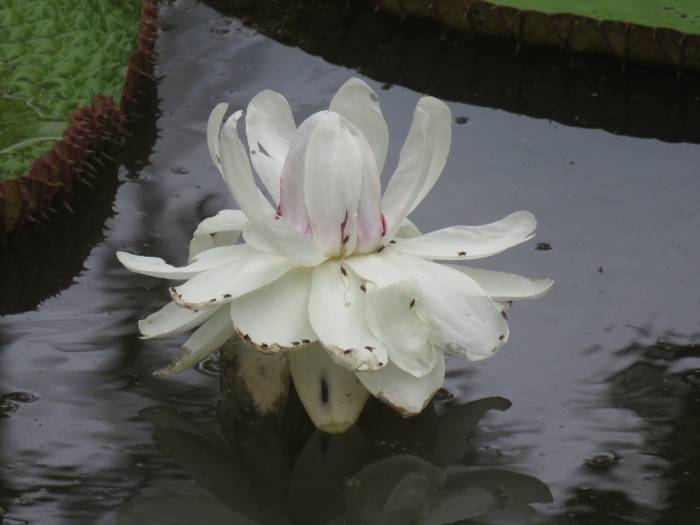Amazon Water-Lily
(Victoria amazonica)
Amazon Water-Lily (Victoria amazonica)
/
/

Juan Carlos Caicedo Hernández
CC BY 4.0
Image By:
Juan Carlos Caicedo Hernández
Recorded By:
Copyright:
CC BY 4.0
Copyright Notice:
Photo by: Juan Carlos Caicedo Hernández | License Type: CC BY 4.0 | License URL: http://creativecommons.org/licenses/by/4.0/ | Rights Holder: Juan Carlos Caicedo Hernández | Publisher: iNaturalist | Date Created: 2019-12-10T16:29:59-08:00 |

























Estimated Native Range
Summary
Victoria amazonica, commonly known as Amazon Water-Lily or Royal Water-Lily, is an evergreen perennial herb native to the still waters of the Amazon Basin and Northern South America, particularly thriving in shallow lakes and bayous. This species is renowned for its colossal leaves, which are circular and up to 3 meters (10 feet) in diameter, with upturned edges, and are strong enough to support the weight of a small child. The leaves float on the water’s surface, anchored by a submerged stalk 7–8 meters (23–26 feet) in length. Victoria amazonica is a night-blooming plant, with spectacular flowers that open white the first night and change to pink on the second night, reaching up to 40 cm (16 inches) in diameter. The flowers are highly aromatic, emitting a fruity scent to attract pollinators such as beetles.
The Amazon Water-Lily is cultivated primarily for its impressive foliage and stunning flowers, making it a centerpiece in large water gardens and public botanical gardens. It requires a warm climate, with a preference for full sun exposure, and must be grown in calm, aquatic environments with standing water. It is a heavy feeder, requiring rich, loamy soil and frequent fertilization to support its massive leaves and blooms. While it is a breathtaking addition to any suitable water feature, it is not frost-tolerant and requires a heated pond or conservatory in cooler climates. Potential problems include leaf damage from wind and pests such as water lilies’ beetles.CC BY-SA 4.0
The Amazon Water-Lily is cultivated primarily for its impressive foliage and stunning flowers, making it a centerpiece in large water gardens and public botanical gardens. It requires a warm climate, with a preference for full sun exposure, and must be grown in calm, aquatic environments with standing water. It is a heavy feeder, requiring rich, loamy soil and frequent fertilization to support its massive leaves and blooms. While it is a breathtaking addition to any suitable water feature, it is not frost-tolerant and requires a heated pond or conservatory in cooler climates. Potential problems include leaf damage from wind and pests such as water lilies’ beetles.CC BY-SA 4.0
Plant Description
- Plant Type: Herb
- Height: 0.5-1 feet
- Width: 4-6 feet
- Growth Rate: Moderate
- Flower Color: Pink, White
- Flowering Season: Summer
- Leaf Retention: Evergreen
Growth Requirements
- Sun: Full Sun
- Water: Aquatic
- Drainage: Standing
Common Uses
Fragrant, Showy Flowers, Water Garden
Natural Habitat
Thriving in shallow lakes and bayous of the Amazon Basin and Northern South America
Other Names
Common Names: Amazon Water-Platter, Giant Water Lily, Royal Water Lily, Royal Water-Lily, Victoria-Lily, Jättenäckros, Abati-Irupe
Scientific Names: , Victoria amazonica, Nymphaea nelumbo, Victoria regia, Victoria regina, Victoria reginae, Nymphaea victoria, Euryale amazonica, Anneslea amazonica, Anneslea brasiliana
GBIF Accepted Name: Victoria amazonica (Poepp.) Sowerby